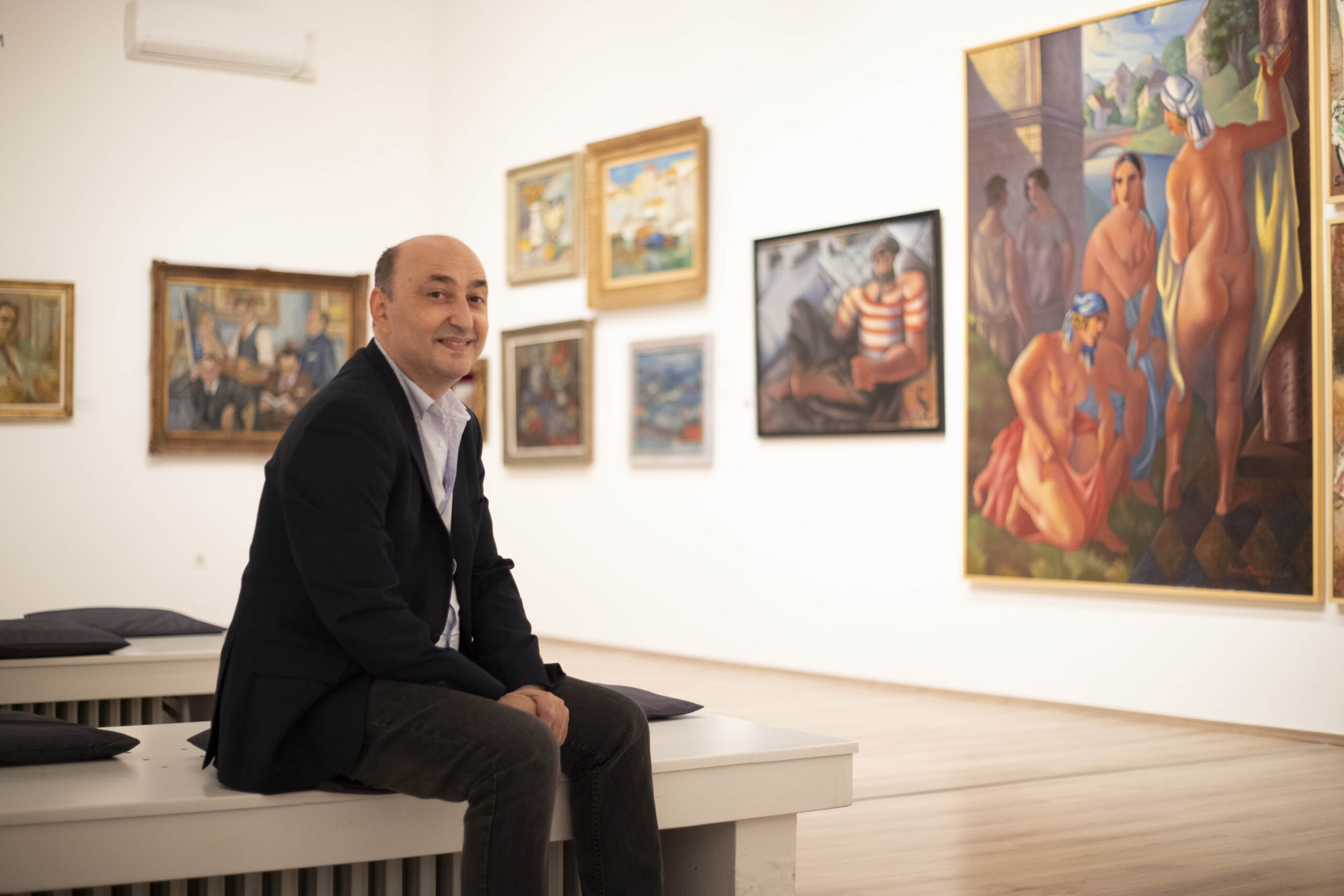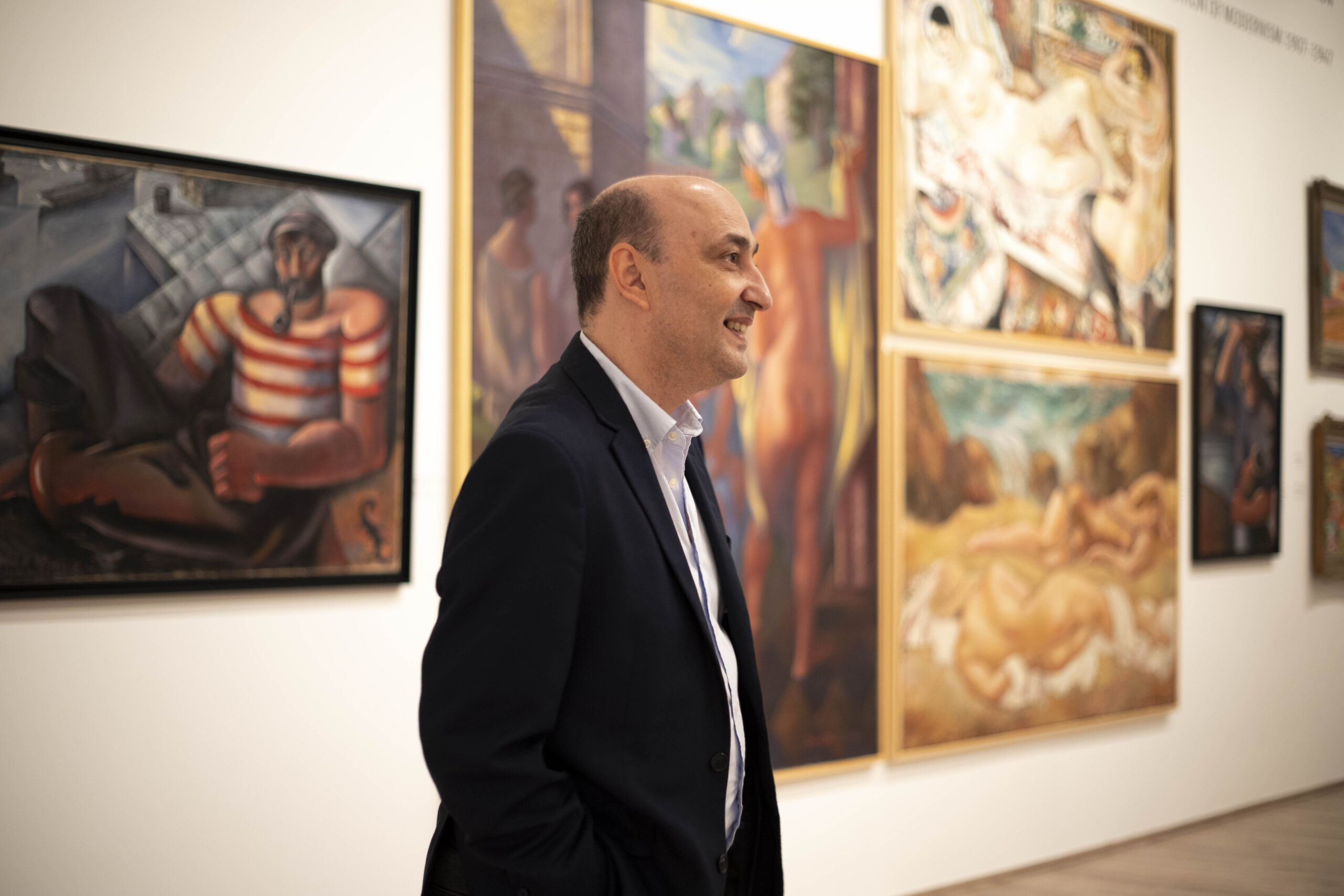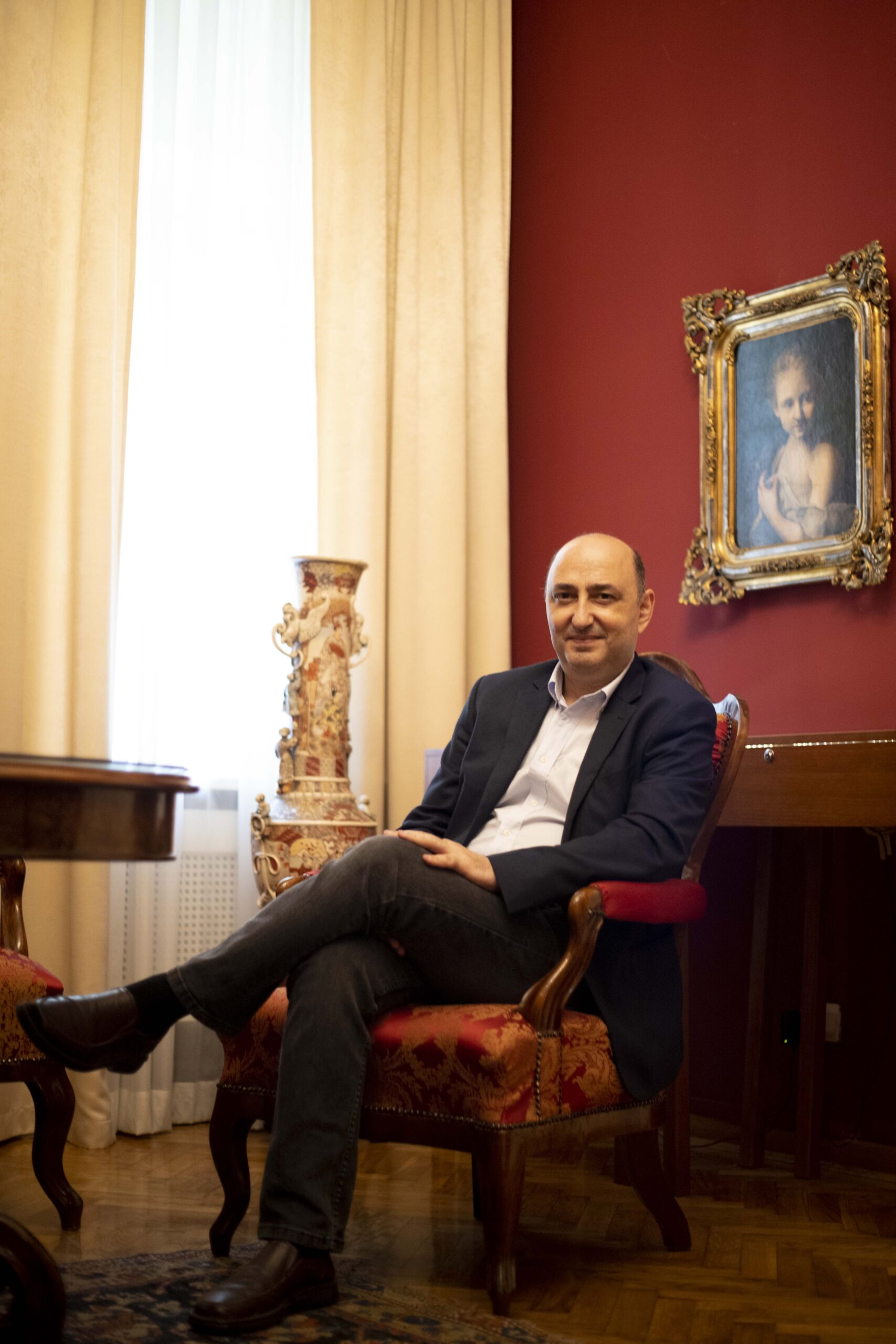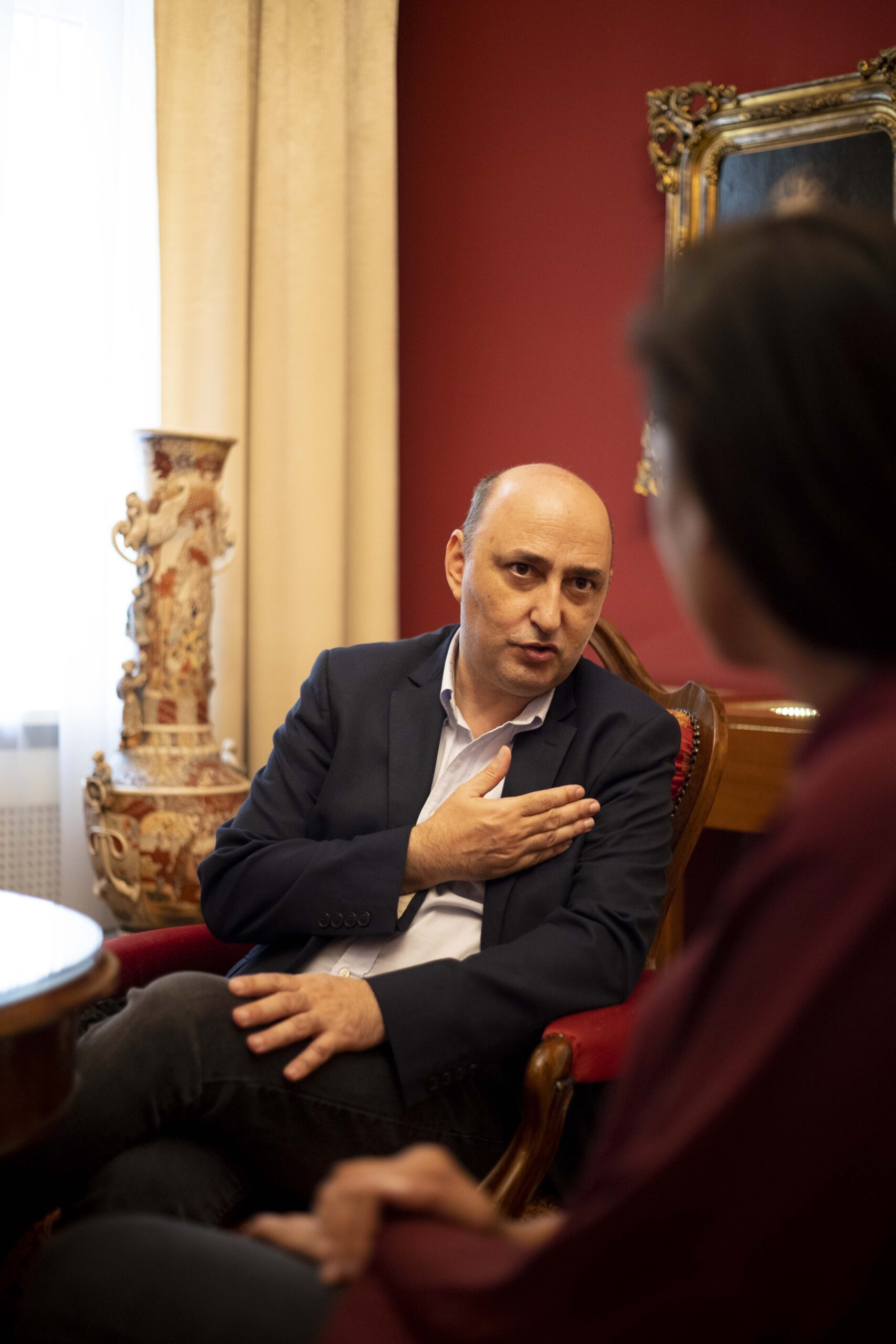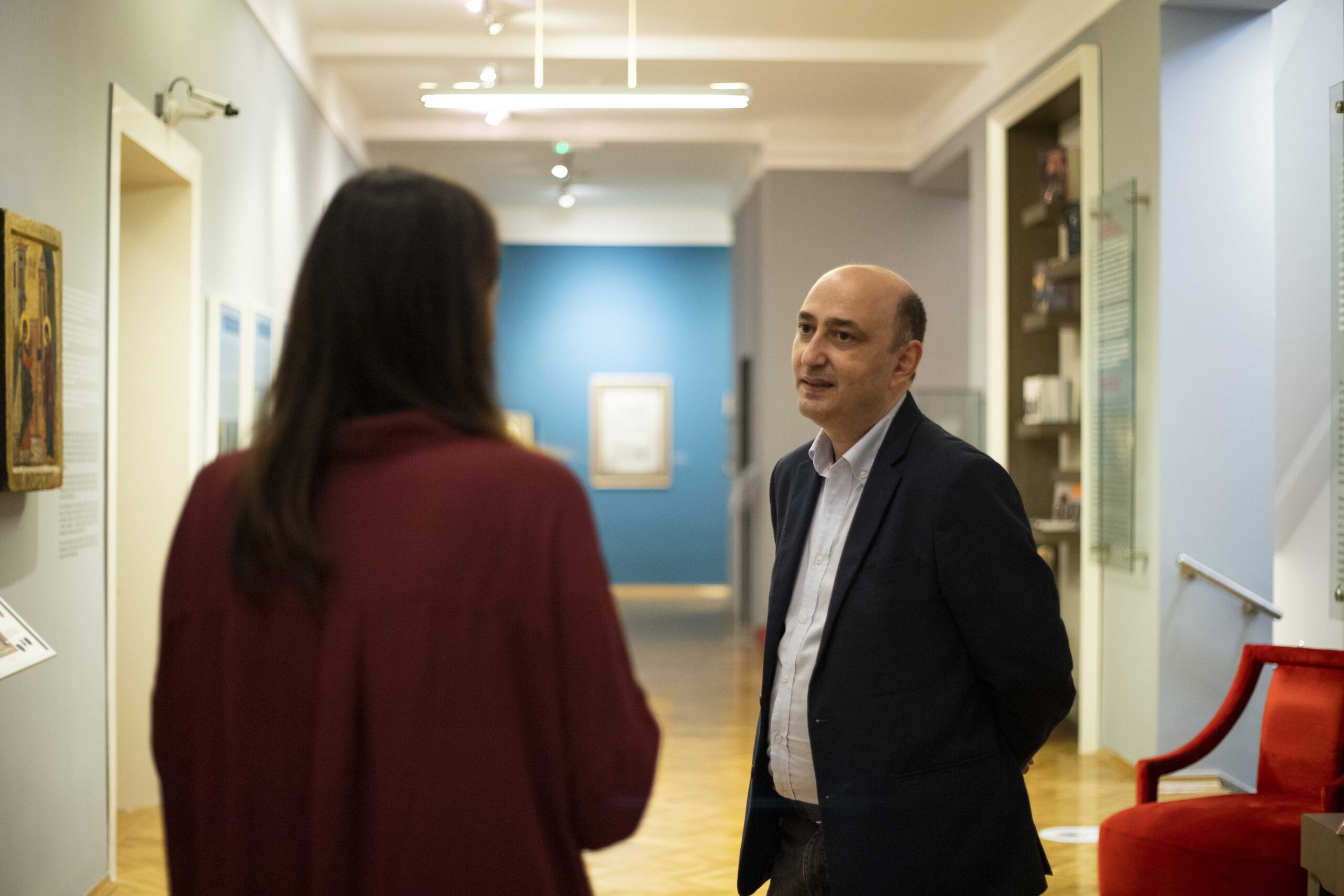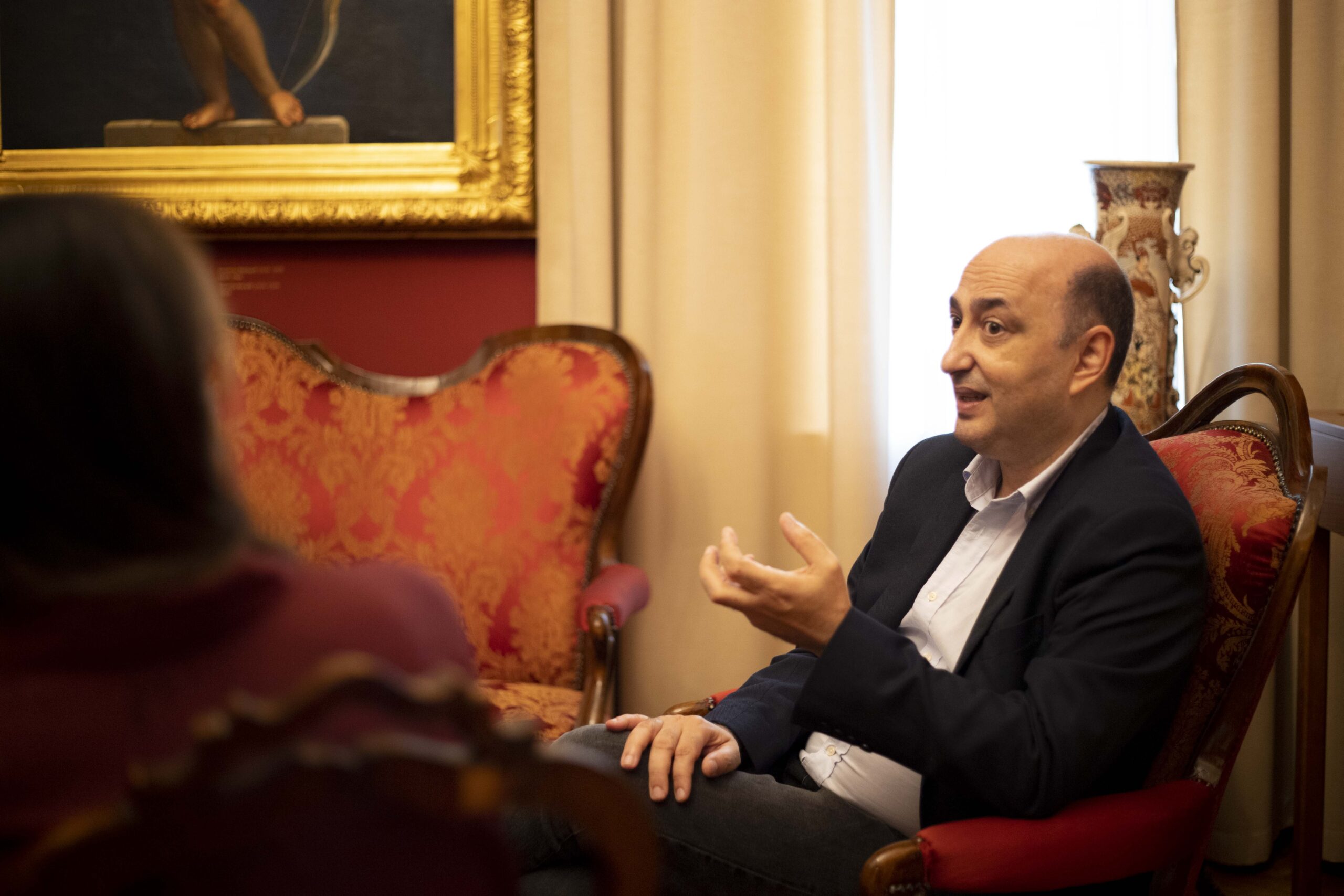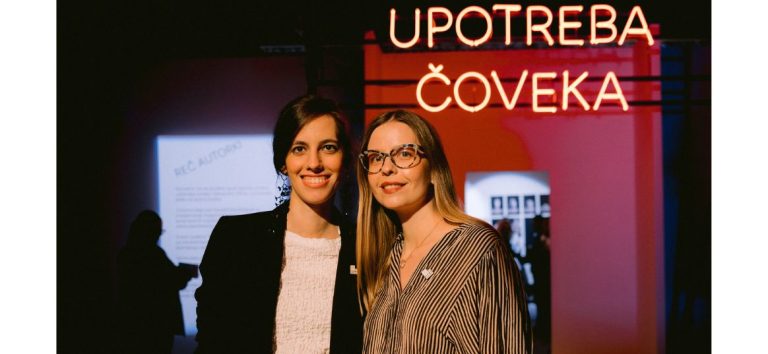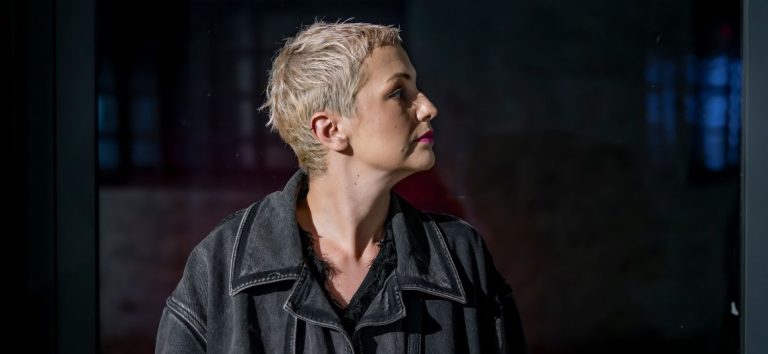In his recent visit to Novi Sad, Sandro Debono, a museum thinker and culture strategist who participated in the Valletta 2018 – European Capital of Culture project, was delighted with the cultural scene of the city, atmosphere and energy you feel at every step. As a consultant of the Gallery of Matica Srpska, together with representatives of this cultural institution, Debono works on several exhibitions that are going to be presented during 2022, when Novi Sad will officially bear the title of European Capital of Culture. He told Visit NS about his positive experiences that will add to the development and implementation of the plans for the next year and his belief that the title of European Capital of Culture will only additionally elevate the city’s already impressive cultural heritage.
We also spoke about the pandemic and how it influenced culture in many ways, while Debono feels the museums, despite this historical situation, became more aware of the potentials the digital world has to offer.
This was your second visit to Novi Sad. Did you have enough time to get to know the city and what impression did it leave on you?
I return to Novi Sad with great pleasure as we slowly emerge from a worldwide pandemic that has kept us grounded for months in unprecedented ways. I admit I did not have much time to discover the city although I do promise myself to come back on holiday.
In between my two visits, I did get to see some of the main attractions of what comes across as a European city to all intents and purposes but its distinct Balkan touch. No wonder they call it the Serbian Athens. I was pleasantly surprised.
You visited Novi Sad as a consultant of the Gallery of Matica Srpska. You’ve been working with the Gallery of Matica Srpska on several exhibitions that will be presented during 2022, a year when Novi Sad is going to bear the title of European Capital of Culture. Could you share with us some interesting things about these projects?
The Gallery of Matica Srpska has great plans for the European Capital of Culture Project. I thought the projects were carefully chosen and well thought to balance Serbian visual culture within the broader European dimension. What’s more exciting is the citizen participation that the gallery has specifically chosen which is very much in line with the latest development on the continent. I think there are all the right ingredients in place – a vision which is clear and long-term, a great team willing to open up and experiment with new ideas that belong much more to the 21st-century museum than to the traditional stereotypical idea of what a museum is or should be.
You present yourself as a museum thinker and a culture strategist. What does that imply?
It’s a very good question which I get from many people I work with. In a nutshell, I help museums think and rethink the normal stereotypical into the more relevant. For me, relevance is all about empathy and the understanding of how a museum can develop human-centred experiences with objects, stories and relationships to engage with. This thinking would definitely be good strategic thinking to implement effectively which is where my experience leading the rethink of a national museum in Malta comes into the picture.
You participated in the implementation of the project of the European Capital of Culture in Valletta in 2018. What are your experiences with that and what do you think is the greatest importance of this title for a city?
I would definitely say – a positive one! It is indeed demanding and deadlines pile pressure on a day to day basis but it is certainly the best experience a city and its community can hope for as culture becomes the lens through which the city is explored and understood from outside and a catalyst for its citizens to come together at the same time. The most important thing to keep in mind is the legacy. The best thing that Novi Sad can hope for is to wake up on 1 January 2023 with not just memories but new experiences improved participation and greater relevance for culture as a prime agent of social change and progress.
Museums and other cultural institutions went through hard times during the pandemic of coronavirus. How have museums across the world coped with these challenges? Did the pandemic change the way museums operate, and the way people visit them?
The pandemic has been an unprecedented global experiment that has also impacted museums in very many ways. Museums have, perhaps for the first time ever, had to operate and function without their publics in the presence and that has shifted much greater attention towards the digital.
Beyond that, there are very many best practices and experiences informed by the need to stay relevant. Some opted to transmit live radio, others got in touch via telephone with their publics at home creating outreach projects that addressed the needs of their publics at that point in time. In short, museums have become much more human-centred and that happened overnight. It would be a big mistake for museums not to capitalise on this historic moment in much more impactful ways, but that depends on the openness to change and the will to keep being and becoming more relevant.
Are the changes caused by the pandemic and the development of digital technologies going to uphold in the future?
Studies by ICOM, NEMO and others unequivocally confirm that museums have become much more aware of the potential digital holds. We are now talking much more about the Phygital, meaning the digital and physical coming together in complementary and cross-referential ways. A search for equilibrium between the two is the desired ambition but the opportunities for small museums are huge. With the right phygital experience in place, museums can reach new publics around the world irrespective of time zone, also thanks to online space that does not run from nine to five. This can also point towards the traditional physical space by promoting it, but also by complementing, broadening and enriching the traditional museum space.
What are your impressions of the cultural scene of Novi Sad? How much were you familiar with the local museums before coming to our city, and what is your opinion on them now that you’ve visited them?
I discovered a city that is culturally alive, active and thriving. Museums and cultural institutions mirror the needs and ambitions of their communities. This dialectic is essential and, with regards to Novi Sad, I could see a thriving cultural scene that bodes well for the capital of culture projects and the city’s leading role as a cultural hub. I truly believe the Gallery of Matica Srpska will continue to be one of the leading stakeholders spearheading innovation and promoting change towards better futures.


